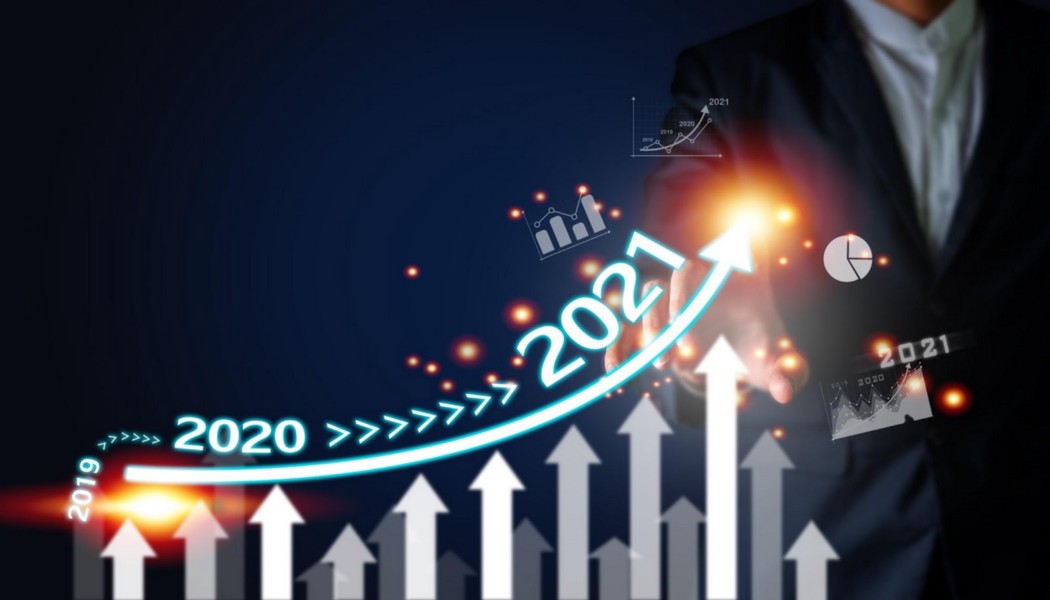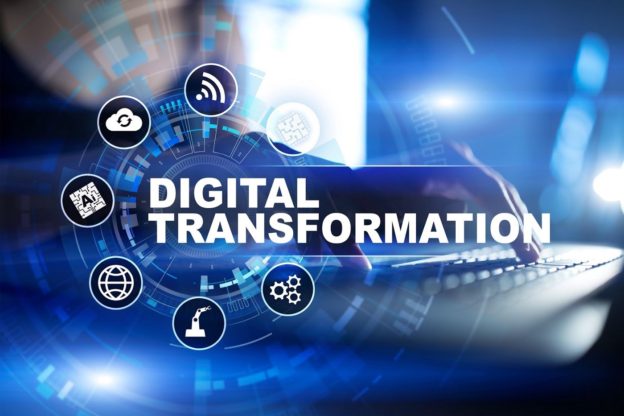These 15 digital transformation trends highlight areas of opportunity and ways for organizations to differentiate themselves from competitors.
I can try and express the impact of the Pandemic in hundred different sentences, but the summary remains the same — COVID-19 has impacted the world in ways no one could have imagined or predicted. While many leaders are used to constant change, this disruption caused by COVID-19 is the hallmark of 2020. The pandemic has forced organizations to re-think, re-imagine, and re-evaluate their processes.
Organizations continue to respond & renew their strategy during the pandemic and explore new ways to operate and drive growth. In the coming year, the global Digital Transformation scene will focus on increased resilience and preparedness for the post-COVID effects. Keeping that in mind, I am sharing a list of 15 strategic trends that will transform the digital scene. These trends highlight areas of opportunity and ways for organizations to differentiate themselves from competitors.

So, What Does 2021 Have in Store for Us?
1. 5G in the Ascendant
2020 was a huge year for 5G — we saw regular and agile 5G deployments on a global scale by Qualcomm, AT&T, Verizon, Nokia, Ericsson, and Huawei on a global level. While telecommunications is booming with the use of 5G, it will also be used in the advancement of Edge Computing, near real-time monitoring and low-latency high-speed application enabled scenarios. In 2021, 5G will champion the disruption scene as it will continue to transform each and every industry that affects our day-to-day living.
2. Intelligent Composable Enterprise
Composable Enterprise (CE) is employed to diversify business functions using microservices using application networks, APIs, and beyond. This means that instead of providing a single product or service, the enterprise offers a variety of microservices to its customers.
Pandemic has taught enterprises to be agile with adaptability and that is where Composable enterprises come in handy. Enterprises with a single product or service will find it more difficult to adjust to unprecedented changes as opposed to composable enterprises that have microservices as new business models powered by the New Normal.
Additionally, Composable enterprise has helped with the evolution of Everything as a Service (XaaS), where most IT functions are scalable as separate services for enterprise consumption.
3. Responsible Enterprise
To be successful in the “New Normal” era, to be successful, enterprises would need to focus on explicit initiatives and technology adoption in the areas such as Sustainability, Innovation as a Service, Enterprise Risk Management, and Transparency and Traceability.
4. Cloud First
According to Gartner, over half of the enterprise-generated data will be produced and processed outside traditional data centers or a single centralized cloud by 2022, compared to just 10% today. The conversation has evolved from choosing between a private or a public cloud. Enterprises are now focusing on a mix of Hybrid, Multi-cloud, and Distributed Cloud strategies.
In the post-COVID world of 2021, Cloud providers would be seen as strategic partners that help with cost reduction and better resilience by fuelling Cloud to Cloud Migration.
5. Internet of Behaviors
The Internet of Behavior (IoB) is all about changing behaviors by using data. IoB acts as a major step in the evolution of how data is collected and used. There is a rise in technologies that collect data that span the digital and the physical world — for example, facial recognition, location tracking, 5G powered Edge Computing, and big data for example. This data collected can be used to influence behavior through feedback loops.
I have identified some of the common use cases and technologies in the IoB scene –
- Everything Connected (XConnected)
- Autonomous Things
- Digital Me
- Digital Twin
- IIoT
6. Anywhere Operations
Anywhere Operations refers to the IT model that focuses on supporting customers, enabling employees, and orchestrating the deployment of business products and services from any geographic location.
This IT operation model also helps with the Hyperlocal business model where the enterprise collaborates with local businesses for the agile distribution of products and services from an offline location within the proximity of a few kilometers. This concept has helped revolutionize the conventional idea of Supply Chains. To understand how the pandemic has reformed the competition between supply chains, read my blog here.
A study by Gartner predicts that, by 2023, 40% of organizations will have adopted Anywhere Operations for an overall optimized customer and employee experience.
7. Data as an Asset
It is an undeniable fact that at the center of all digital transformation is the newest digital currency — DATA. Organizations that have been successful in adapting to the Pandemic changes have recorded data to analyze their past mistakes and their current operation, and to predict the trends of tomorrow.
The IT industry, with the help of big data and a high level of technologies, like machine learning, can be used to effectively analyze data to help in figuring out an appropriate response to crises.
In 2021, organizations will be curating data, looking for ways to capture more for monetization, and using it indirectly for use cases like Responsible business, Supply chain resiliency, Employee experience, Customer Experience, New Pricing, Business models, and Security.
8. Responsible AI
I feel that the new year will be all about embracing AI not just as an innovation initiative, but as part of the core strategy for the company. CXOs need to consider how AI and Composite Architectures can work together, in sync, to help their companies solve the business challenges presented by the dynamic ecosystem of the pandemic.
The joint forces of Artificial Intelligence and Machine Learning will be the force multiplier to drive new business models and insights. Other AI trends that will be popular, in my opinion, are Composite AI, Generative AI, Formative AI, AI Security, DataOps, ModelOps, and DevOps, and AI Democratization.
Additionally, the concept of Algorithmic Trust will trend as you will see the development of Algorithm Digital Economy in 2021. Algorithms would be the way to differentiate products on the basis of enterprise business resiliency, marketing, and business models.
While AI would be all trending like a raging fire, organizations would need to ensure everything done in the AI area needs to be well within the range of the AI Ethics, rules, and regulations.
9. Cybersecurity and Digital Fraud Prevention
Workforces will be collaborating with their colleagues remotely and to make this digital journey possible, Cybersecurity as a business imperative will play a crucial role. In 2021, enterprises would be focusing on privacy, compliance-enhancing computing, digital privacy, and AI ethics, Distributed Digital Identity, and Zero Trust Design.
Remote work has boosted the number of security breaches, and there is an increasing need to protect data. Zero Trust design ensures the protection of modern digital environments using network segmentation and providing a Layer 7 threat prevention. To adopt Zero Trust Architecture, you don’t need to remodel or make alterations to the existing technology. Zero Trust architecture is highly dynamic as it has to adapt to your existing processes and make them more efficient.
10. Low-Code/No-Code Platforms
Workforces no longer have the luxury to work out of the same location, and this has impacted the productivity of a lot of enterprises. This can mean investing a lot of time, effort, and money to develop platforms to streamline the business processes. This can be done with ease when they opt for a Low Code/No Code first strategy.
A prediction by Gartner projects that, by 2024, low-code will account for more than 65% of all application development activities. Low Code/No Code offers a robust model that allows interoperability amongst functions that may be necessary for scaling up operations in the future.
11. Hyper Automation With the Right Mix of Low-Code/No-Code
In the last two years, Automation has evolved from the use of RPA and Infra as Code to Hyper Automation. This technology employs advanced technologies, like AI, Machine learning, and Robotic Process Automation, to automate processes that were carried out by the human workforce.
There is a need for businesses to automate their operations as much as possible. This is when I recommend businesses to turn to the practice of Hyper Automation using tools, like AI Machine Learning, Event-driven software, robotic process automation, and other types of the decision process and task automation tools.
It is crucial to “reach the customers where they are” — on their mobile devices. With Low Code/No Code, it is possible to automate the process of creating apps with ease. Other features, like Everything as a Code and Intelligent Automation Processes, will also make its presence feel in the coming year.
In 2021, it is predicted that more than 20% of IT workers would be working along with Personal Contextual Digital Assistance, a technology that is beyond AI-infused apps and simple chatbots.
12. Remote Workforce and Talent Management
With virtual working taking a front seat, remote workforce and talent management is a vital necessity. With employees geographically dispersed, it takes a well-designed technology to streamline the workflow.
Rapid changes in the business models, work environments, customer expectations have left workers in need of tools that can help them maximize their productivity. These tools can range from individual changes, structural tweaks, or the provision of effective technology to meet the goal. These tools can help employees understand their goals clearly and improve their efficiency accordingly.
Tools, like reliable video conferencing, cloud-based connectivity, digital collaboration tools, and a decision-making approach that is powered by the synergy between artificial and human intelligence, are helping the HR departments reimagine the way to manage talent globally.
13. New Computing Architectures and Ubiquitous Computing
I am focusing on two new architectural introductions in the arena of computing.
- Quantum Computing, a design that has the potential to change the face of multiple industries — from telecommunications and cybersecurity to advanced manufacturing, finance, medicine, and beyond. The beauty of Quantum Computing lies in the use of quantum mechanics and the efficiency to process massive and complex datasets more efficiently than classical computers.
- A secure Computing Environment is helpful when it comes to the implementation of safeguards, ethical regulations, and compliance requirements.
14. Human Augmentation
Unprecedented times call for an enhancement of a person’s cognitive and physical capabilities. This is where human augmentation comes in with its use of technology. Human Augmentation works on two different levels:
- Physical Augmentation, where an inherent physical capability is altered by implanting or hosting technology within or on the body.
- Cognitive augmentation helps an individual think better and make well-informed decisions. This involves exploiting information and applications for a better learning experience from episodes.
15. Intelligent Experience
Intelligent Experience is an amalgamation of Customer Experience, Employee Experience, Workplace Experience, User Experience, Multi Experiences, Digital Experience, and Emotional Experience.
In addition to the above trends, in 2021, we would also see where few technologies like Blockchain, 3D Printing, AR/VR would move pilots and will become mainstream to develop new business models, resilience supply chain and re-imaging the telemedicine, healthcare scenarios, remote monitoring, B2B data sharing, learning, training, and after-sales support scenarios.
2021 is all about resilience and bouncing back from the challenges posed by the pandemic. The major focus is placed on the health of the business and its stakeholders. Innovations in terms of business models, business operations, and security are the predicted highlights of the coming year.
What should be the first order of business for you? Evaluating the weak links in your enterprise, gathering data on your strong suits, and implementing these trends accordingly. That’s what progress is about — seizing opportunities out of crises.
Which trend, in your opinion, would rule the digital transformation scene in 2021?
https://dzone.com/articles/top-15-digital-transformation-trends-of-2021





